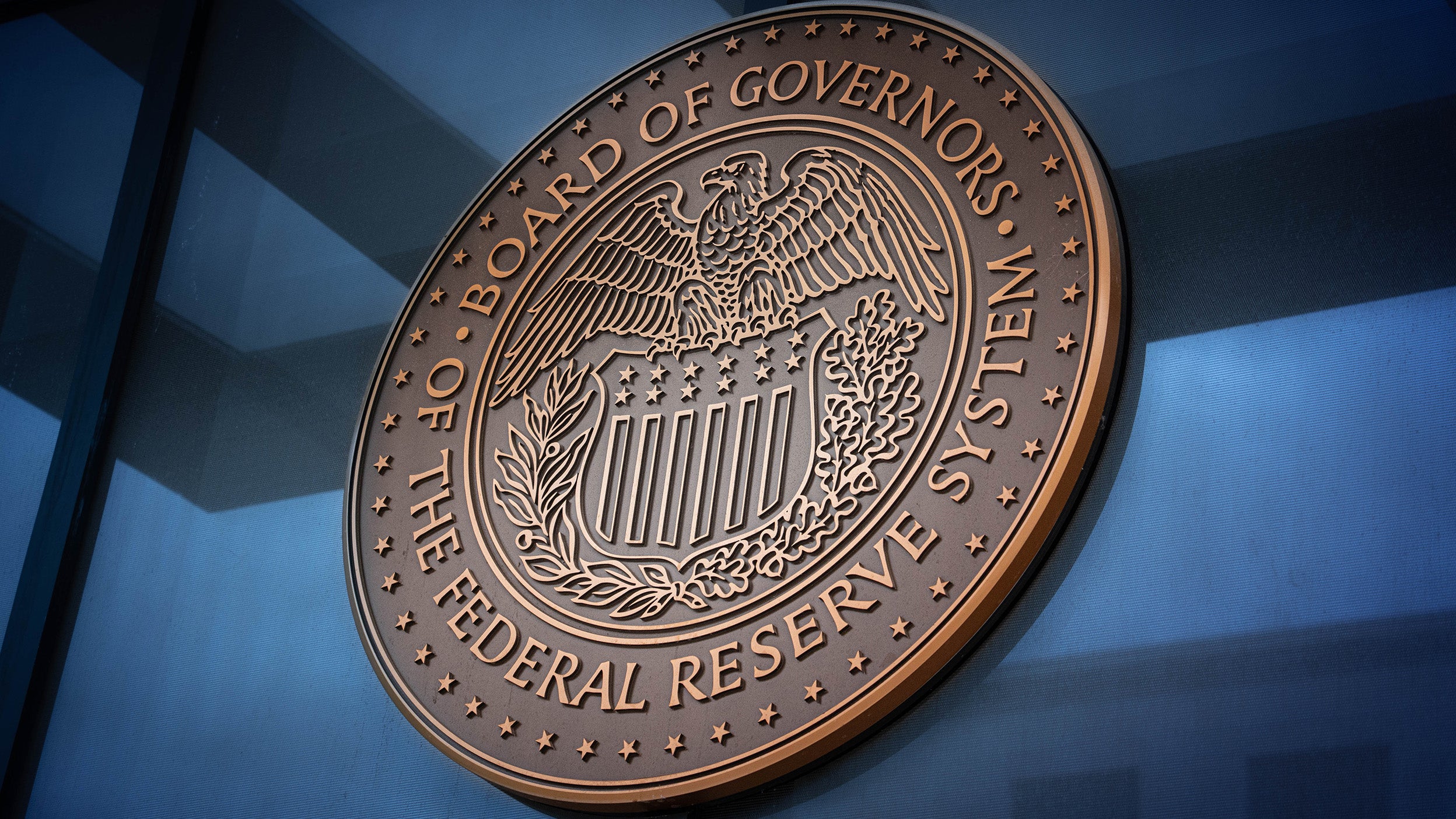
Markets and Economy Above the Noise: Rethinking 2025 narratives
In 2025, clear storylines on the Federal Reserve, AI stocks, and rates captivated us. But the numbers don’t always match the narratives.

The companies driving AI spending are well-capitalized with substantial cash flow and proven business models.
With surging investment in AI and interest rate cuts on the horizon, the backdrop for risk assets looks promising.
As US inflation has generally moderated, the rate of growth in credit card delinquencies has also flatlined.
There was a moment recently when the S&P 500 Index was trading at 6,700 and the 10-year US Treasury yield was at 4.10%.1 I briefly considered releasing Above the Noise right then, if only to grab the attention of the nation’s teenagers. Six seven! Forty-one!
If that makes no sense to you, ask your youngest relatives. Or I can try to explain it, though my nearly 50 years on this planet may disqualify me as a reliable interpreter. Here’s the secret: It’s part of a wave of Gen Alpha slang that’s intentionally nonsensical or confusing. And honestly, that’s probably a fitting segue into the current market narrative.
Some observers view this third consecutive year of outsized US stock gains as similarly nonsensical.2 That perception likely stems from elevated valuations,3 but valuations have never been a great timing tool. So, let’s try to make things less confusing.
The economy has been resilient. The Atlanta Federal Reserve (Fed) estimates real gross domestic product (GDP) growth is running between 3% and 4%.4 Corporate earnings have been strong.5 Inflation expectations are contained.6 Yields have fallen.7 Oil prices are below $60.8 Credit spreads are tight.9 And the Fed appears ready to cut rates further.10 In a “Goldilocks-ish” macro environment like this, I’m not inclined to fight the Fed.
Let’s immediately get to the artificial intelligence (AI) bubble question. I reached out to Ash Shah, Senior Portfolio Manager of the Discovery Growth team at Invesco. His response:
“There are certain echoes of past tech bubbles in today’s markets, particularly the AI circular investment deals, where suppliers, investors, and customers become intertwined.
There are key differences, however, that make this moment distinct from the late 1990s. The companies driving much of the AI spending today are well-capitalized, generate substantial cash flow, and have proven business models.11 Valuations, while elevated, aren’t at the extremes of the dot-com era.12 For example, NVIDIA trades at around 23x (times) forward earnings, compared to Cisco’s 80x multiple during the height of the 1990s bubble.13 Back then, fiber was being laid without a clear use case. Today, demand appears insatiable, with NVIDIA essentially reporting that it can’t ship chips fast enough.14
We do need to monitor the risks. Certain companies, for example, OpenAI, have committed to sizeable spending in the coming years and are relying on continued access to capital markets to support it. If the funding dries up, especially for firms that are increasingly interconnected, then we could see a meaningful unwind of stock valuations. So far, there are little to no signs of stress in the capital markets.”
… the concerns over credit card balances and delinquencies may be overstated. Delinquency rates had been remarkably stable for years, until inflation surged in 2022. That spike in prices led to record-level credit card balances, sparking fears that consumers were overextending themselves. However, that’s a bit like saying “Avengers: Endgame” made more money than the original “Star Wars.” That’s only true if you don’t adjust for inflation. In real dollar terms, balances declined for most credit risk tiers, with the notable exception of the lowest-rated borrowers.15 Not surprisingly, as inflation has generally moderated,16 the rate of growth in credit card delinquencies has also flatlined.17
“As we saw during the Covid pandemic, lab-created experiments can wreak havoc when they escape their confines. Once released, they can’t easily be put back. The ‘extraordinary’ monetary-policy tools unleashed after the 2008 Financial Crisis have similarly transformed the Federal Reserve’s policy regime, with unpredictable consequences.”
— US Treasury Secretary Scott Bessent
This one draws my ire a bit. I was there in 2008, staring into a deflationary abyss. Fiscal support was scarce, rendering monetary policy as the only game in town. For a decade afterward, the Fed struggled to get inflation expectations back up into the comfort zone.18 When the Fed raised rates in 2015, the dollar surged19 and the stock market didn’t handle it well.20
I was also there in 2020, during the pandemic, facing yet another deflationary threat. Again, the Fed responded forcefully. Inflation did emerge, but fiscal spending and supply chain disruptions played a major role. Now, five years later, we’ve come through with inflation expectations contained21 and a 4.3% unemployment rate.22 That’s no small feat given the magnitude of those two deflationary shocks.
If anything, rather than scolding the policies of former Fed Chair Ben Bernanke, I’d support building a monument to him on the National Mall.
A: First, let’s define the debasement trade. It’s based on the belief that fiat currencies, especially the US dollar, are losing purchasing power due to persistent government deficits and aggressive monetary policy. Investors who subscribe to this view hedge against currency erosion by shifting capital into hard assets that can’t be easily printed or diluted, such as gold, bitcoin, and other commodities.
Personally, I don’t subscribe to the debasement trade, notwithstanding the recent rises in gold and bitcoin.23 If anything, the US dollar has shown remarkable stability and has even rallied recently after falling from historically lofty levels earlier in the year.24 There’s been a strong appetite for US Treasuries, with 10-year yields falling nearly 80 basis points this year,25 and continued demand for US stocks.26 While assets like gold and bitcoin can serve as potential hedges within a diversified portfolio, I wouldn’t advocate for a substantial allocation to the so-called debasement trade.
A: That’s almost like asking if the Kansas City Chiefs would have as many championship rings without Patrick Mahomes. They have Patrick Mahomes. But seriously, the surge in AI investment is masking some underlying softness in the economy. Payroll growth is slowing,27 manufacturing surveys have hovered just below the line between expansion and contraction,28 and housing activity remains weak.29 It’s hard to prove a counterfactual, but I suspect that without the AI boom, policymakers might have already moved more aggressively to ease conditions, potentially reinvigorating housing and other interest-rate-sensitive sectors.
The point is, we do have AI investment, and it has supported aggregate growth. And policy easing appears to be continuing. So, regardless of how you attempt to prove this counterfactual, the backdrop for risk assets looks promising.
I held back on travel this month for a variety of different reasons. My colleague took the tour bus from Pittsburgh to Detroit to Kansas City to Omaha to Baton Rouge, and other locations along the way. I’m not going to deny that I had FOMO (fear of missing out), even as I did enjoy being home for the family dinners. My world tour commences next week. Rest assured, I’ll be back with my travel notes.
Enjoy the fall. As Billie Holiday, Ella Fitzgerald, Louis Armstrong, Frank Sinatra, and many others sang, “Autumn in New York, it lifts you up.” I couldn’t agree more.

In 2025, clear storylines on the Federal Reserve, AI stocks, and rates captivated us. But the numbers don’t always match the narratives.

For investors looking to diversify their mega-cap technology exposure, improving growth and falling interest rates may be good reasons.

A rate cut, which markets are pricing in despite Fed member differences, and an expected improving economy in 2026, could support stocks.


Get the latest information and insights from our portfolio managers, market strategists, and investment experts.
Important information
NA4911827
Image: Rapeepong Puttakumwong / Getty
All investing involves risk, including the risk of loss.
Past performance does not guarantee future results.
Investments cannot be made directly in an index.
This does not constitute a recommendation of any investment strategy or product for a particular investor. Investors should consult a financial professional before making any investment decisions.
Alpha refers to the excess returns of a fund relative to the return of a benchmark index.
A basis point is one-hundredth of a percentage point.
Bitcoins are considered a highly speculative investment due to their lack of guaranteed value and limited track record. Because of their digital nature, they pose risks from hackers, malware, fraud, and operational glitches. Bitcoins aren't legal tender and are operated by a decentralized authority, unlike government-issued currencies. Bitcoin exchanges and bitcoin accounts aren't backed or insured by any type of federal or government program or bank.
The Bloomberg US Corporate Bond Index measures the investment grade, fixed-rate, taxable corporate bond market. It includes US dollar-denominated securities publicly issued by US and non-US industrial, utility, and financial issuers.
Cash flow is the net amount of cash and cash equivalents generated by a business.
Commodities may subject an investor to greater volatility than traditional securities such as stocks and bonds, and can fluctuate significantly based on weather, political, tax, and other regulatory and market developments.
Credit risk is the risk of default on a debt that may arise from a borrower or issuer of bonds failing to make required payments.
Credit spread is the difference in yield between bonds of similar maturity but with different credit quality.
Deflation is a decrease in the price level of goods and services.
Diversification does not guarantee a profit or eliminate the risk of loss.
Monetary easing refers to the lowering of interest rates and deposit ratios by central banks.
Gross domestic product (GDP) is a broad indicator of a region’s economic activity, measuring the monetary value of all the finished goods and services produced in that region over a specified time period.
Forward earnings per share is a variant of earnings per share and is calculated using a company’s projected earnings over the next 12 months divided by the number of outstanding shares.
Fluctuations in the price of gold and precious metals may affect the profitability of companies in the gold and precious metals sector. Changes in the political or economic conditions of countries where companies in the gold and precious metals sector are located may have a direct effect on the price of gold and precious metals.
An investment cannot be made into an index.
Inflation is the rate at which the general price level for goods and services is increasing.
Breakeven inflation is the difference in yield between a nominal Treasury security and a Treasury Inflation-Protected Security of the same maturity.
The price-to-earnings (P/E) ratio measures a stock’s valuation by dividing its share price by its earnings per share.
Purchasing Managers’ Indexes (PMI) are based on monthly surveys of companies worldwide and gauge business conditions within the manufacturing and services sectors.
A risk asset is generally described as any financial security or instrument that carries risk and is likely to fluctuate in price.
The S&P 500® Index is an unmanaged index considered representative of the US stock market.
A spot price is the current market price at which an asset is bought or sold for immediate payment and delivery.
Spread represents the difference between two values or asset returns.
In general, stock values fluctuate, sometimes widely, in response to activities specific to the company as well as general market, economic and political conditions.
Treasury Inflation-Protected Securities (TIPS) are US Treasury securities that are indexed to inflation.
The US Dollar Index measures the value of the US dollar relative to the majority of its most significant trading partners.
West Texas Intermediate (WTI) is a type of light, sweet crude oil that comes from the US.
Yield spread is the difference between yields on differing debt instruments, calculated by deducting the yield of one instrument from another.
The opinions referenced above are those of the author as of Oct. 16, 2025. These comments should not be construed as recommendations, but as an illustration of broader themes. Forward-looking statements are not guarantees of future results. They involve risks, uncertainties, and assumptions; there can be no assurance that actual results will not differ materially from expectations.
This link takes you to a site not affiliated with Invesco. The site is for informational purposes only. Invesco does not guarantee nor take any responsibility for any of the content.